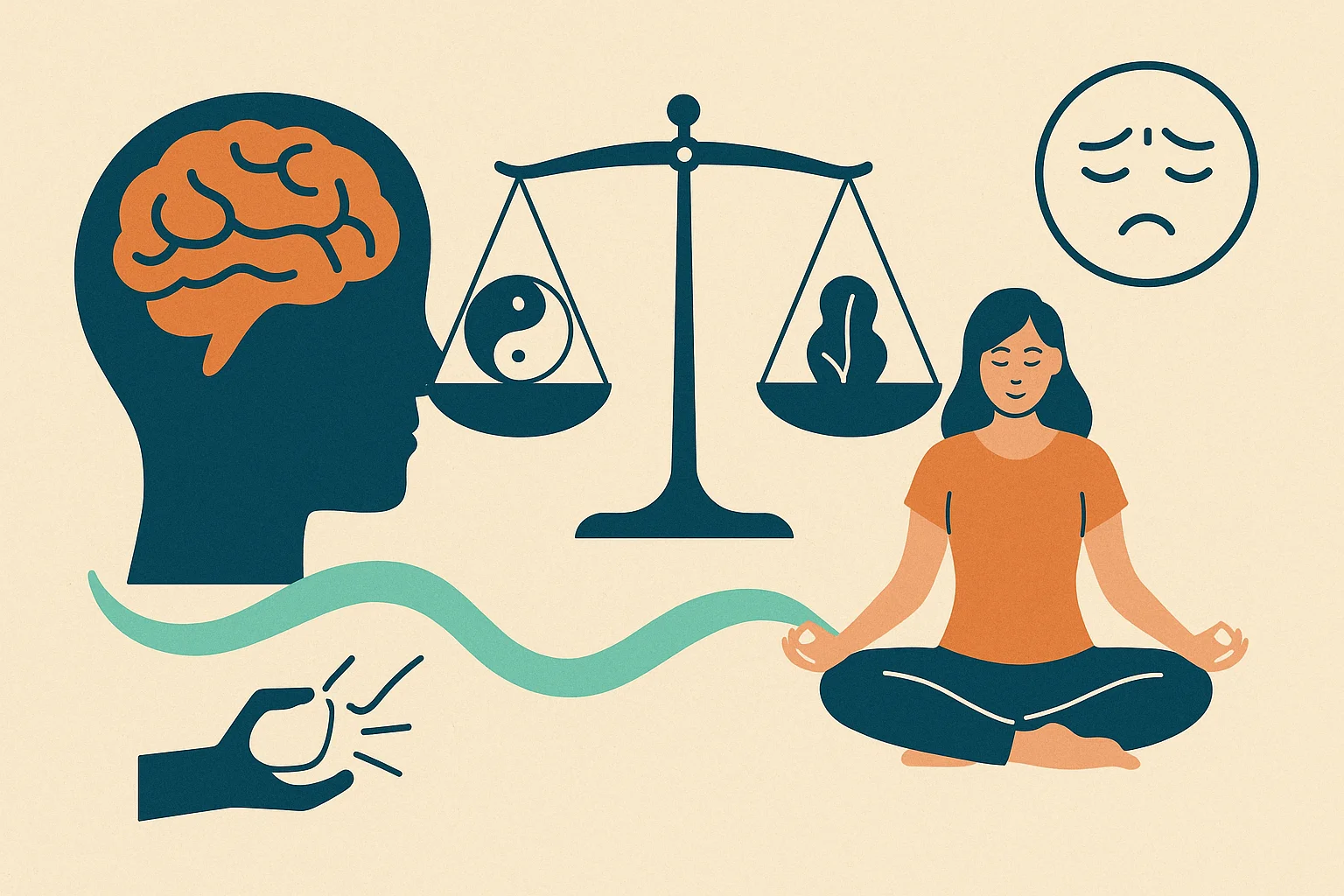Dialectical Behavior Therapy (DBT) delivers a powerful framework for individuals seeking to improve emotional regulation and reclaim control over their mental health. Combining the principles of acceptance and change, DBT promotes healing by empowering individuals to engage with their emotions rather than avoid them.
DBT begins by fostering acceptance of one’s emotional state. This vital first step allows individuals to acknowledge their feelings without judgment, creating space for transformation. Patients learn to observe their thoughts and reactions with curiosity instead of criticism, fostering emotional resilience.
As the journey continues, DBT equips individuals with coping strategies that help manage intense emotions. For example, the distress tolerance module offers actionable tools like distraction and self-soothing, enabling clients to navigate emotional pain without reverting to harmful behaviors. These practical skills anchor DBT’s effectiveness.
Long-term emotional regulation remains a cornerstone of DBT. Through structured modules, individuals gain the ability to identify emotional triggers, respond thoughtfully, and minimize vulnerability to future distress. By building mastery in daily life and cultivating positive experiences, clients move toward emotional balance and greater life satisfaction.
Defining Dialectical Behavior Therapy
Dialectical Behavior Therapy stands out as a dynamic treatment model that merges evidence-based strategies with the complexities of human emotion. It provides a structured yet flexible path toward recovery from overwhelming emotional distress.
Originally developed for borderline personality disorder, DBT now supports a broader range of emotional health challenges. From mood disorders to self-harming behaviors, DBT offers individuals clear steps to reduce emotional reactivity and build emotional resilience.
The foundation of DBT rests on the dialectical principle—that two opposing ideas can be true at the same time. Clients are taught to accept their present while actively working toward meaningful change. This dual focus creates harmony and a powerful engine for transformation.
DBT’s structure includes weekly therapy sessions, group skills training, and access to coaching. These pillars ensure that clients are supported in real-time and equipped with tools to navigate daily challenges while continuing to grow emotionally.
Reframing Mindfulness in DBT
Mindfulness is one of the four core skills in DBT, yet it’s often misunderstood. Unlike meditation designed for relaxation, DBT mindfulness teaches patients to stay grounded and aware without judgment.
Mindfulness in DBT trains clients to observe and describe their inner experience. Rather than getting swept away by emotions, clients learn to acknowledge thoughts, feelings, and sensations as they arise. This observational stance promotes clarity and reduces impulsive reactions.
Central to DBT mindfulness is the ability to separate experience from evaluation. By practicing nonjudgmental awareness, patients develop emotional space—allowing them to respond skillfully instead of react instinctively.
Regular mindfulness practice deepens self-awareness and forms the basis for other DBT modules. It sharpens attention, reduces emotional volatility, and fosters greater calm amidst daily stressors.
Demystifying Distress Tolerance
The distress tolerance module in DBT teaches clients how to endure emotional pain without making things worse. It’s not about numbing feelings but facing them head-on with courage and control.
Rather than avoid discomfort, DBT encourages patients to sit with it. Techniques such as self-soothing, distraction, and “radical acceptance” help individuals tolerate crises without impulsive actions. These methods are especially valuable for those with self-destructive tendencies.
By learning distress tolerance, individuals gain tools for navigating emotional storms. This strengthens resilience and prevents escalation of mental health crises.
Ultimately, this module builds the ability to survive intense emotional moments while protecting long-term well-being.
Understanding Emotion Regulation
DBT’s emotion regulation module empowers individuals to transform their relationship with emotion—not to suppress feelings, but to work with them.
Through skills like “checking the facts” and “opposite action,” clients assess whether emotions match reality and choose healthier behaviors in response. This process shifts emotional patterns from impulsive to intentional.
Emotion regulation also emphasizes prevention. Patients learn to reduce emotional vulnerability through healthy habits like sleep, nutrition, and exercise. This proactive stance promotes emotional strength.
By mastering emotion regulation, individuals reclaim agency over their internal world. They respond to life with clarity and control rather than emotional chaos.
Integrating DBT into Daily Life
The full power of DBT emerges when its tools are woven into everyday routines. Through structured sessions and on-the-go support, DBT is built for real-world application.
Weekly therapy and group skills classes offer clients structured environments to learn and practice DBT skills. These sessions foster connection and accountability.
Phone coaching, a hallmark of DBT, provides in-the-moment guidance during emotional crises. This ensures skills are reinforced during real-life challenges, increasing their effectiveness.
Additionally, diary cards help track emotions, behaviors, and progress. These tools facilitate therapist-patient collaboration, leading to more targeted and responsive care.
Tracking Progress and Results
Progress in DBT is evaluated through both emotional and behavioral changes. Clear benchmarks guide therapy and offer clients proof of growth.
Indicators of success include reductions in self-harm, emotional outbursts, and risky behaviors. In their place, clients experience improved emotion regulation and interpersonal skills.
Therapists use these metrics to tailor treatment over time. If growth plateaus, interventions are recalibrated to meet the client’s evolving needs.
Consistent progress tracking ensures DBT remains effective and relevant to each individual’s healing journey.
Comprehensive Support in DBT
Support in DBT extends beyond the therapy room, offering clients an ecosystem of care that includes personalized therapy, group learning, and community integration.
Individual sessions address personal emotional challenges. Meanwhile, group skills classes offer practical guidance on applying DBT tools in social situations.
The therapist-client partnership is a pillar of DBT success. Open communication fosters trust and collaboration, laying the foundation for deep, lasting transformation.
Together, these support systems ensure that clients never walk alone on their path to recovery.
Best Practices for DBT Implementation
Adhering to best practices in DBT ensures the therapy’s power is fully realized. These standards guide treatment structure, skill-building, and relational dynamics.
DBT follows a clear structure. Clients start with mindfulness and progress through distress tolerance, emotion regulation, and interpersonal effectiveness. This sequence builds on foundational skills to support complex challenges.
Ongoing practice is essential. Skills aren’t learned overnight—they require consistent rehearsal. Clients track their use of DBT tools to identify what works and where they need more support.
The interpersonal module of DBT empowers clients to navigate relationships with confidence and care. Through assertiveness techniques like DEAR MAN, they build stronger boundaries and healthier connections.
Reflecting on the Power of DBT
Dialectical Behavior Therapy offers more than symptom relief—it builds a foundation for lasting emotional health and self-empowerment.
Its balance of acceptance and change helps clients heal while respecting their experiences. DBT affirms that people are doing the best they can—and can do better with the right support.
By integrating DBT into their lives, clients gain mastery over emotions, improve relationships, and move from survival to fulfillment.
Questions & Answers
How does DBT help with emotional control?
DBT provides practical tools to recognize, understand, and regulate your emotions without being overwhelmed, leading to greater emotional stability.
Can DBT improve my relationships?
Yes, part of DBT focuses on interpersonal effectiveness, which helps enhance communication skills, empathy, and the ability to set healthy boundaries.
Is DBT suitable for me?
DBT is designed for individuals facing challenges with emotional regulation, offering personalized strategies that foster growth and recovery in a supportive environment.
Request your appointment today!
Renova Wellness & consulting
801-317-8522 & info@renovawc.com
2332 W 12600 S #2B
Riverton, UT 84065
Related Articles
Cognitive Behavioral Therapy, Humanistic Therapy Trauma Focused Therapy, Group therapy, Mental Health Therapy Overview, Mental Health Professionals Overview, Psychotherapy, Evidence-Based Psychotherapy, Dialectical Behavior Therapy





